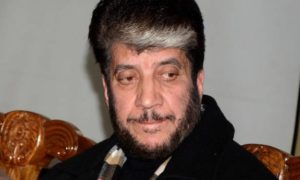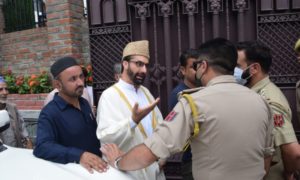In the past twenty-four years, rarely have any questions been raised regarding the pro-freedom leadership of Kashmir.
As per Rising Kashmir’s editor, Shujaat Bukhari, in some cases, newspaper offices were attacked and people were threatened for asking questions about the movement, its direction and the role of its leaders.
One also fears being labeled as a traitor for questioning the leadership. Kashmiris should understand that asking questions and holding people at the top accountable for their actions is for our own good, nobody should enjoy impunity unless they want another Sheikh Abdullah.
Medical Scam
Since the mass-uprising of the 1990s, Pakistan has set around 100 seats annually in its medical and engineering institutions for those children whose close kith and kin have been martyred by the Indian forces in Kashmir. These seats are either sold to the highest bidder or passed on to a candidate who doesn’t meet the criteria.
Hurriyat Conference spokesperson, Ayaz Akbar told Kashmir Reader in 2016, “Children of police officers and bureaucrats were recommended by none other than Hurriyat leaders. I think hardly five to ten percent of the seats have gone to the kin of martyrs.”
The fraud was exposed in 2015 after which Hurriyat Conference head in Pakistan, Mehmood Sagar, was forced to resign and Shabir Ahmad Shah was asked to step down. However, both these leaders were given ‘honorable’ exit as no statements were issued about their expulsion.
Who dies? Who provides?
Hurriyat Conference was formed in the tumultuous 90s after various amalgams joined hands and began spearheading the movement. During and after the 2008 Amarnath land row, it successfully led people in all popular uprisings against the Indian state. People followed their protest calendars wholeheartedly. However, just few months before the 2010 uprising, some factions of Hurriyat were mulling to join the ‘mainstream’ and fight elections.
As per a study done by Kashmiri journalist, Zubair Dar, almost all of those killed in 2010 came from backgrounds that are urban-lower-middle-class or of the rural peasantry. Thirty-five out of the 97 families survive on less than 5000 rupees a month, 32 earn between 5000 and 10,000 rupees a month. Seventeen have a reported monthly income between 10,000 and 20,000 rupees and only 2 families have incomes more than 20,000 rupees a month.
If a similar study is done on the 2016 uprising, results will not be any different. Another study found out that 98% of the half-widows (2,000-2,500 in number in total) in Kashmir have a monthly income of less than Rs 4,000 per month. It also revealed that 65% of the half-widows live in houses with minimum amenities. Around 95% of these half-widows could not search for their husband due to various limitations.
The health of these half-widows is also a matter of concern as the study states that more than 79% of them have some physical ailment and nearly 62% are under regular medication. Most of these and even the families of militants remained at the mercy of pro-India parties.
Here are a few examples:
Sajad-Ahmad-Darzi
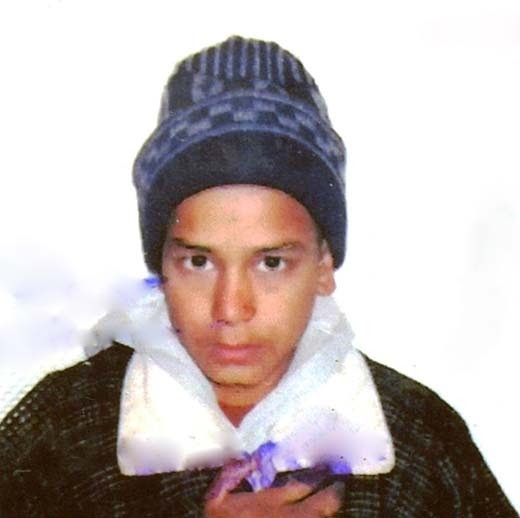
This is Sajad Ahmad Darzi, a rag picker from Pattan. He is one of the first victims of the pellet gun in Kashmir. His mother, Saleema, begged on streets to manage the health expenses for two years until he died of his injuries unheard on May 19, 2012. There was no financial support from Hurriyat. His family is still struggling financially
Muzaffar Ahmed Mir
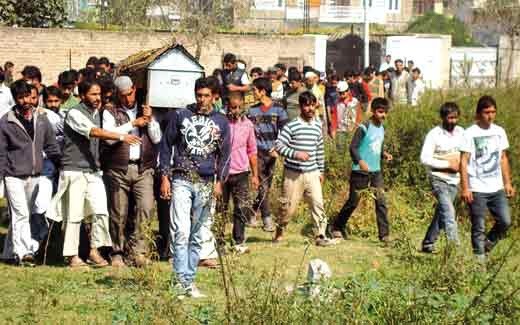
Muzaffar Ahmed Mir was shot in 2010 while coming back from his tuitions. A bullet hit his spinal cord and paralyzed him till his death in 2011. Till his death, Muzaffar’s family was desperately looking for financial support to get their son treated outside the state as doctors in Kashmir were unable to treat him but nobody showed up to help. After he passed away, some of the Hurriyat leaders visited the family but they were beaten up by the local youth and were not even allowed to meet his parents.
Hajira Begum

Hajira has given 4 of her sons to the struggle. She once went to the Hurriyat office in Srinagar where a leader whose name she doesn’t know paid her Rs 200. She returned the money to him and told him that she is a mother of four martyrs, not a beggar. She still lives in extreme poverty.
Amir Kabir
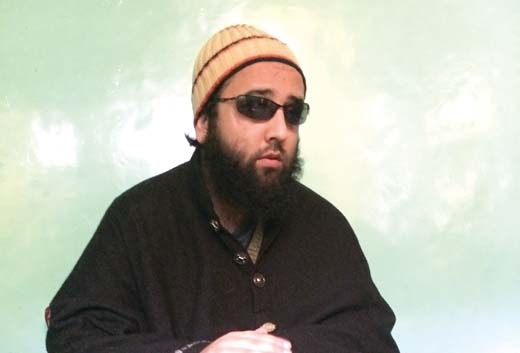
Amir was hit by pellets while on his way to buy medicine for her mother in Baramulla. Yasin Malik had asked him to visit his Srinagar residence for financial help. “I was excited that Malik is going to help me and he might feel my pain but when I reached Srinagar, 55 kms from my home, he kept his phone switched off. Then I returned and called him again in the evening, his phone was on that time but I found his tone different. He told me that I lied to him about my financial condition. Since then I never approached any separatist leader.”
There are thousands of cases like these. Pellet and bullet victims are still battling for their treatment. Falsely implicated youth are still suffering in jails with nobody to represent them in the court. This carelessness to their very own people who are willing to die on Hurriyat’s call makes them no less than those whom they claim to fight.
Who failed whom?
In 2011, while releasing his autobiography Syed Ali Geelani said, “In 2008 while entire Kashmir was on the road demanding Azadi through summer; in winter the same people came out in droves to vote. In summer it was ‘we want freedom’ and in winter it was ‘we want transformers and roads’.”
Hurriyat generally blames the masses for failing them but what else do you expect from non-stop calendars which only increase the death count and produce no concrete result? Except for giving calls for chalos and bandhs, Hurriyat doesn’t seem to find any other form of resistance useful. It should know if it doesn’t start looking for alternatives, Kashmir will keep getting economically weaker and more dependent on the pro-India parties. The promise of development will be used to get votes from the lower class.
As per noted political analyst, Noor Muhammad Baba, Hurriyat is weaker than it was in 1993, has failed to deliver and remains legitimate only because of the sentiment they represent.
He also says, “Hartal can be used to highlight the issue which it did here during the initial phase of the uprising. But beyond a point the strategy has diminishing returns and doesn’t serve any purpose. Hartals and shutdowns aren’t the final means to achieve ends. This strategy is productive if used judiciously but now it has reached a point in Kashmir where it has become self-inflicting, we are now only harming ourselves.”
We all know millions were and are being donated for the Kashmir cause, but even after twenty-four years, Hurriyat has failed to build even a single school, college, hospital or a library for the common masses. Hurriyat wants people to abandon the facilities provided by the government without providing any alternative for survival.
They forget at the end of the day, families of militants, protesters and lower-class have always remained at the mercy of pro-India parties. It is these people who carry the burden of Azaadi while our ‘leaders’ and their loyalists turn from rag to riches. Some of these leaders and their workers have multiple houses, others have numerous shops and cars. Some even have hotels and property abroad.
According to US State Department Cable ‘Kashmiri politics is as filthy as Dal Lake’, source being envoy David Mulford on February 3, 2006 (revealed by Wikileaks), “Beneath the surface of these political developments, the corrosive combination of money and corruption continues to strengthen its grip on the lives and calculations of politicians, separatists, terrorists, police, Army, and civilian administration officials, raising the question of whether the Kashmiri elite has an incentive to find a lasting political settlement.”
Lack of Strategy
On November 6 2016, after four months of protests and more than 96 dead, Hurriyat called up ‘stakeholders’ to discuss the future course of action. For the previous four months, Hurriyat had no idea about what it was doing except just going with the flow. While the meeting was going on, people outside who are now used to Hurriyat’s u-turns raised slogans, warning them not to let the ongoing uprising stop. The volume was so huge that Yasin Malik had to come out in the middle of the meeting and assure them that nothing such was going to happen.
This move was played by the Hurriyat to put the blame on the so-called stakeholders, whom they had suddenly started to remember once they realized they had no idea what to do next, but the civil society outsmarted them and offered unconditional support to whatever the ‘leadership’ would decide.
On 19 November, Hurriyat lifted it’s shutdown after 133 days. On December 6, in the midst of protests, Hurriyat issued a statement inviting tourists and Yatris to Kashmir, thus hinting to the fact that it was no more interested in continuing the ongoing uprising.
Here I’m reminded of Sarjan Barkati words, who’s in jail since October 1, 2016 and hasn’t received any legal support from Hurriyat nor has his financially struggling family been helped in any manner, “In a few days, A, B, C, will talk about lifting the shutdown. I know it. They haven’t said it till now but they will. If Khan sahab leads the protest, he is my leader, if Geelani leads, he is my leader, if Yasin Malik leads, he too is my leader. But whoever of them asks you to let go before we have reached our goal (Azaadi), know that he is not our leader but an agent of our enemy.”
A few days before this betrayal, Hurriyat had promised Kashmiri people long term sustained struggles, programs and modes of protest which are yet to be seen. This change, which we may or may not see in future came twenty-four years after Hurriyat’s formation and it’s continued failures since 2008.
As per A. G. Noorani, a prominent lawyer, constitutional expert and political commentator, “Hurriyat leaders should descend from their perches and take interest and involvement in the people’s many pressing issues. During the freedom movement, even the tallest leaders took part in humble municipal activities. On March 10, 1904, Quaid-i-Azam Mohammad Ali Jinnah was elected to Bombay’s municipal corporation. Sir Pherozeshah Mehta was already its member. Jawaharlal Nehru participated actively in Allahabad’s municipal corporation, as did Vallabhbhai Patel in the Ahmedabad corporation… As part of this exercise, the leaders can interest themselves in the economic plight of the citizens and the many problems that beset traders, businessmen, students, teachers and the rest. In short, the Hurriyat should immerse itself in the plight of the people beyond feeding them slogans and demanding sacrifices of them. If the Hurriyat is to move forward and become/stay relevant, it must be with the people and of it. This will strengthen the movement as well as lift the morale of the people. Such a strategy is pre-eminently sustainable.”
Jailed and forgotten
Thousands of Kashmiri prisoners languish in jails across India. Youth are taken away as prisoners and lodged outside Kashmir because the Indian Government believes Kashmiri Police force will be sympathetic to them. Most of them according to family members have been implicated in false cases.
Most of these Kashmiris cannot afford legal fees and have to undergo constant and brutal torture. One can imagine Hurriyat’s insensitiveness from the fact that even Afzal Guru wasn’t provided with any legal help. The court later appointed a junior lawyer who did not visit his client even once in jail, did not summon any witnesses in Guru’s defense, and did not even cross-examine the prosecution witnesses.
When the Bar Association was questioned for not providing any legal help to Afzal Guru, it’s spokesperson said, Afzal and his family never sought any legal help from them. Shouldn’t there already be a proper legal mechanism to save innocent Kashmiris from decades of imprisonment and torture?
As per Afzal Guru’s wife, Tabassum Guru, “Except Shabir Ahmed Shah, not a single Hurriyat leader came forward to arrange a good lawyer for my husband. A good lawyer could have saved his life. Resistance leaders only remember my husband on his martyrdom anniversary and made no efforts to persuade India to hand-over his mortal remains. These leaders failed to show a united face and I am sorry to say that these leaders let us down at every stage”.
As per Wikileaks (cable 82638), a Hurriyat leader in a meeting with a US ambassador had admitted that his faction had chosen to remain as quiet as possible about Afzal’s hanging. This is the treatment meted out to one of the bravest sons of soil, in a case which received a lot of media attention, now where do we, common people stand?
Orphans
Nearly 40 percent of over 200,000 orphans in Kashmir are victims of armed conflict. As per Sharief Bhat, state head of Save the Children, children are being trafficked outside the state for child labour, their vital organs are being sold, experiments of new medicines are being done on them and many are vulnerable to, and victims of, child sexual abuse.
In a research done by the same organisation, they found around 20 percent orphans suffer from depression across the state. Forty percent orphans show signs of nervousness, 21 percent were silent due to shock, 16 percent reported mood swings, 14 percent were very impatient, 12 percent complained of sleeplessness and irritability while 11 percent had withdrawal symptoms. The other symptoms indicating trauma amongst orphans include recurring nightmares (eight percent). Lack of appetite (six percent), staring blankly into space ( three percent), and drug addiction (one percent). One percent of orphans have also committed suicide. Thousand of orphans have also crossed the age of marriage but still remain single due to no resources and social stigma.
Kashmir’s renowned sociologist, Professor Bashir Ahmad Dabla, surveyed 300 orphans. In his report, he stated that 86 of the 300 orphan children he surveyed received financial help from relatives, 67 from government, 36 from NGOs and 24 from other sources like neighbors and well-wishers. But the rest, the single largest group of 87 orphan children, receive no help at all.
In the worlds’ highest militarised zone where anybody can be slapped with a PSA anytime, these orphans are not Hurriyat’s problem as they have no role in the political game play. Hurriyat has ignored them, while some other people with vested interests have turned it into an industry of about 120 crores.
Awareness
As per noted Human Right lawyer & activist, Parvez Imroz, “We have completely failed to show the truth of Kashmir to the world. India has successfully created a deception surrounding Kashmir by portraying the Kashmiri struggle as terrorism. The other factor is that the attempts of the Kashmiri diaspora, which has huge numbers in Britain and Europe, have not been very successful.”
In these twenty-four years, Hurriyat has rarely laid an emphasis on internationalizing the Kashmir conflict. Had they worked like the Palestinians did, things could have been different.
I have also noticed a disturbing/harmful trend on the internet. It is usually employed by some Pakistani ‘cyber activists’ in particular and their people in general, who claim to be the well-wishers of Kashmiris and act like they know more about Kashmir then we ourselves do. A clear case of misplaced solidarity.

In this cartoon, Pakistan’s Maliha Lodhi is shown as the voice of the voiceless but look what Kashmiris have been reduced to. Is this solidarity? Doesn’t look like it.
Hundreds of disrespectful cartoon and videos like the one above are shared in huge numbers every now and then in the name of solidarity, not respecting the emotions of Kashmiris who even after suffering so much are not crawling for help but standing face to face with their occupier.
Unity
Hurriyat is an alliance of 26 political, social and religious organizations formed in 1993 after its leaders were released following a detention of two years. Every party tries to run Hurriyat as per its wishes, internal tug of war among factions continues to this day which has weakened the organization. It split into two in 2002 and into three recently. All of them claim to be the ‘real Hurriyat’. This battle of egos has affected the struggle at many junctures when leaders have publicly dissed each other. Why do the leaders refused to unite for the sake of the people who have suffered? The so-called JRL only exists in Photo-ops.
Hurriyat is fast losing relevance among the youth and needs to introspect and plan a proper strategy to survive and lead this movement to its logical conclusion. If they are not able to do it, it is better for them to get out of the way.
Arsilan is a Kashmir based blogger.
Views and opinions expressed in this article are those of the author’s and do not necessarily reflect the editorial position and policy of Free Press Kashmir.





